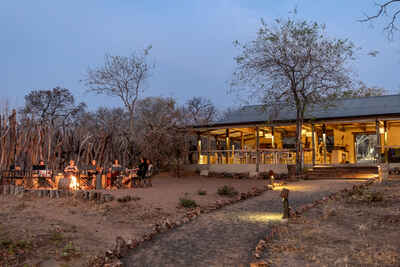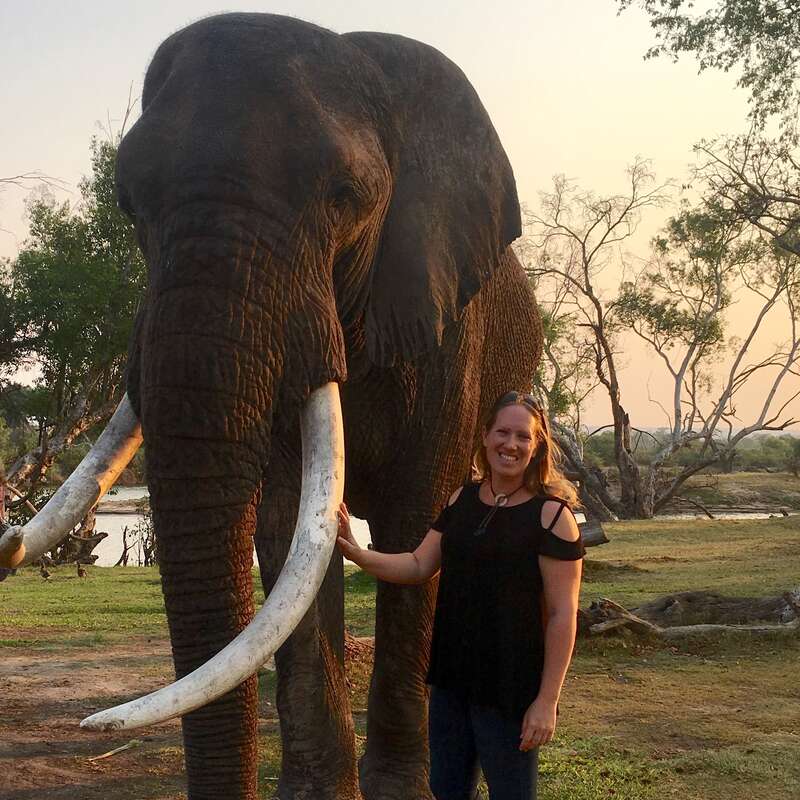About Chobe Elephant Camp
Chobe Elephant Camp is situated in the Chobe Forest Reserve on the western perimeter of Chobe National Park.
The camp sits high on a rocky ridge, overlooking the mighty Chobe River and its surrounding floodplains, with views across to Namibia's Zambezi Region (formerly the Caprivi Strip). The camp is simple and fairly contemporary in design, and fits into the surrounding bush setting.
Chobe Elephant Camp has more of a farmhouse feel to it than the traditional tented camp but we love its quiet location. When we first stayed in May 2014 we found the guides knowledgeable and the camp staff friendly and willing to help, if somewhat new and unpolished. On our last stay in 2024, the staff were still friendly and polite, and the guides good. The camp is not luxurious and comes without the bells and whistles (there are other options nearby if luxury is a requirement), but their rates reflect this and are very reasonable.
Our view
Chobe Elephant Camp has more of a farmhouse feel to it than the traditional tented camp but we love its quiet location. When we first stayed in May 2014 we found the guides knowledgeable and the camp staff friendly and willing to help, if somewhat new and unpolished. On our last stay in 2024, the staff were still friendly and polite, and the guides good. The camp is not luxurious and comes without the bells and whistles (there are other options nearby if luxury is a requirement), but their rates reflect this and are very reasonable.
Accommodation
18 chalets
Children
Best for aged 10+
Open
All year
Activities

4WD Safari

Birdwatching

Boat trip

Helicopter

Private activities
Traveller reviews of Chobe Elephant Camp
27 real, un-edited reviews from Expert Africa's travellers.
Arrived 3 Jun 2025, 3 nights
"Chobe Elephant Camp review"
Overall rating: Excellent
Arrived 26 May 2025, 2 nights
"Chobe Elephant Camp review"
Overall rating: Excellent
Arrived 6 May 2025, 2 nights
"Chobe Elephant Camp review"
Overall rating: Good
Arrived 8 Nov 2024, 2 nights
"Chobe Elephant Camp review"
Overall rating: Excellent
Arrived 21 Aug 2024, 2 nights
"Chobe Elephant Camp review"
Overall rating: Excellent
Arrived 17 Jul 2024, 2 nights
"Chobe Elephant Camp review"
Overall rating: Excellent
Arrived 19 Jun 2024, 3 nights
"Chobe Elephant Camp review"
Overall rating: Excellent
Arrived 29 May 2024, 2 nights
"Chobe Elephant Camp - beautiful scenery "
Overall rating: Excellent
Arrived 17 May 2024, 2 nights
"So Many Animals, So Little Time"
Overall rating: Good
Arrived 19 Sep 2023, 3 nights
"Chobe Elephant Camp review"
Overall rating: Excellent
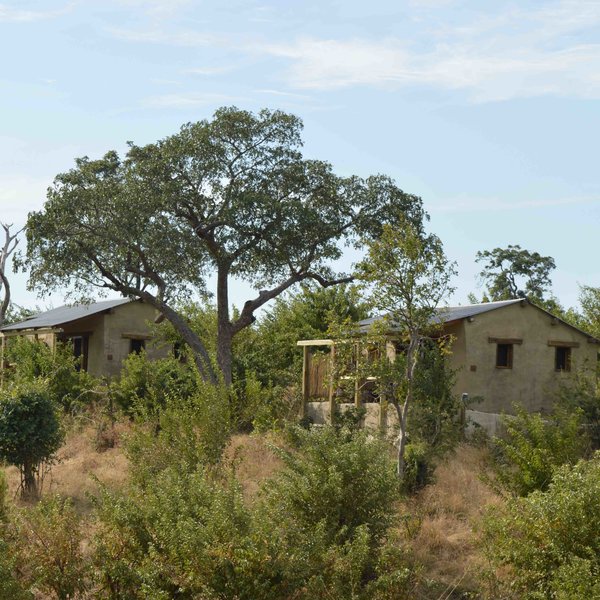
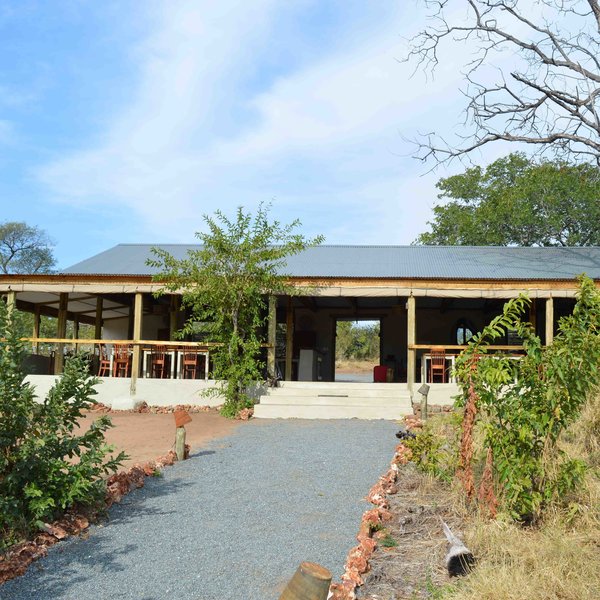
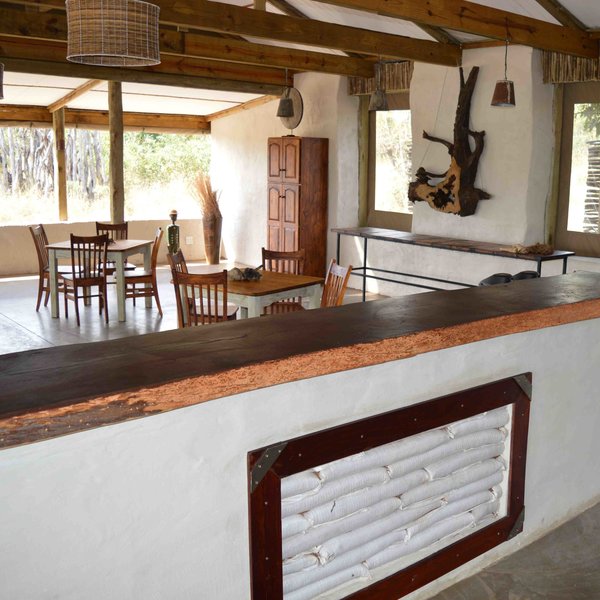
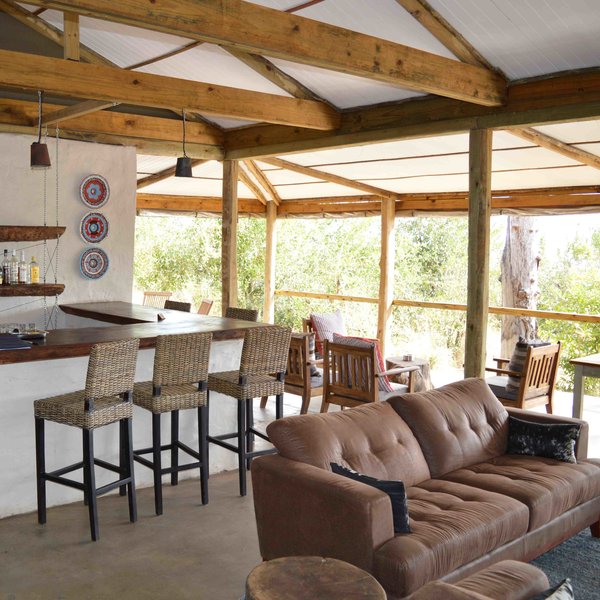
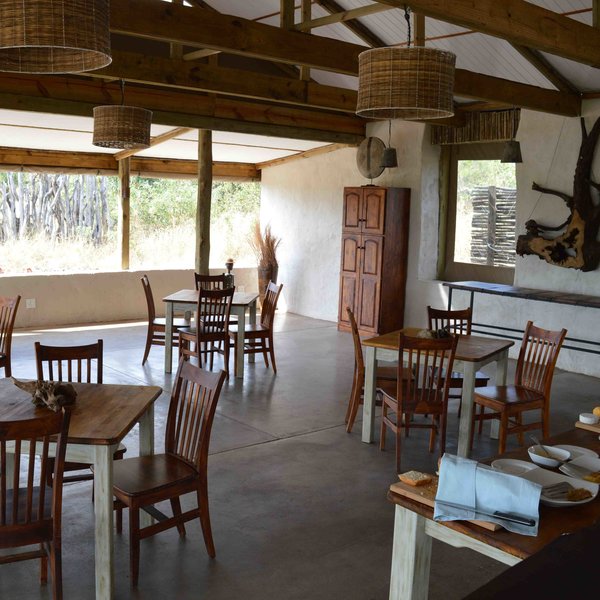
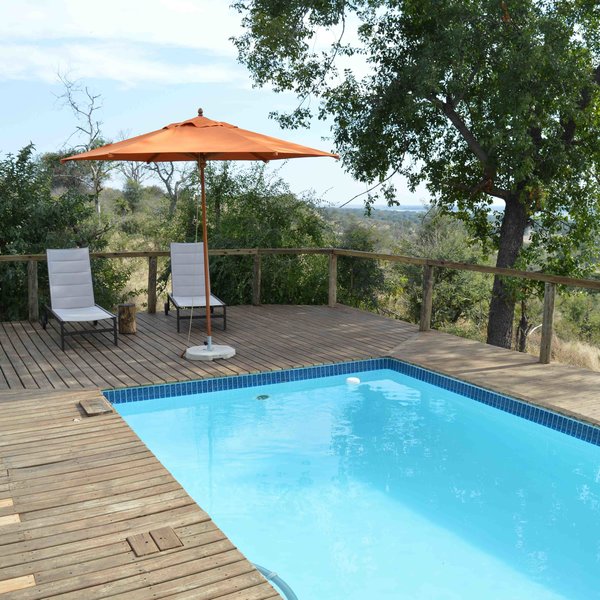
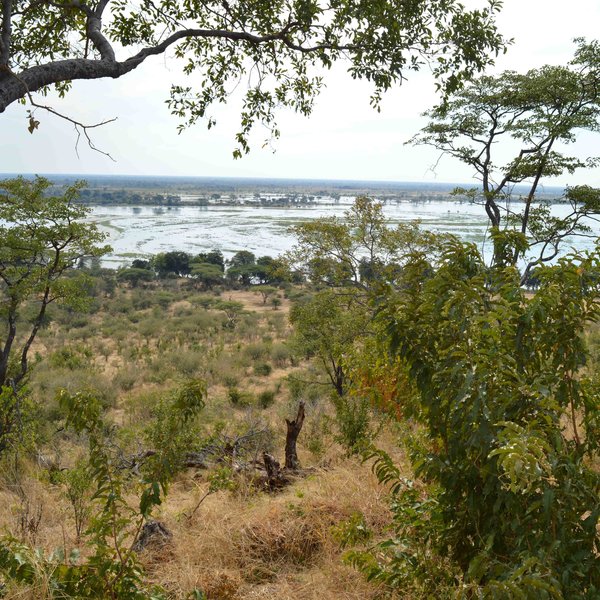
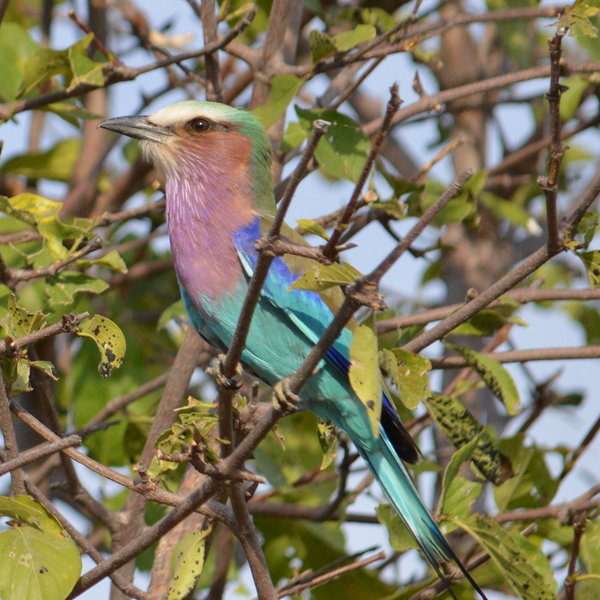
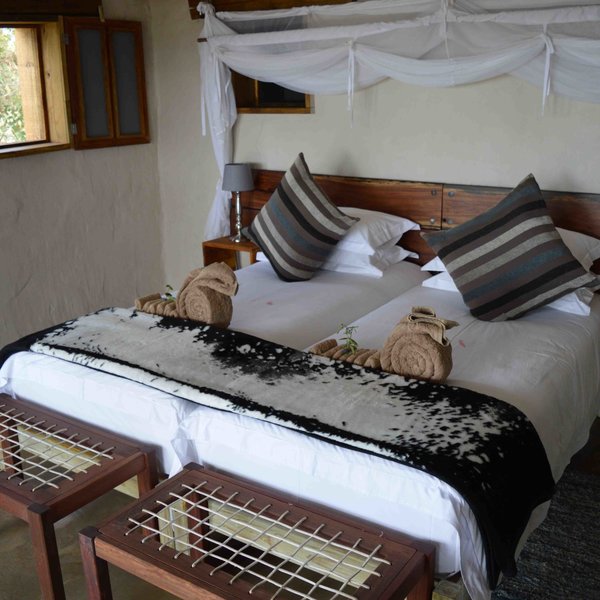
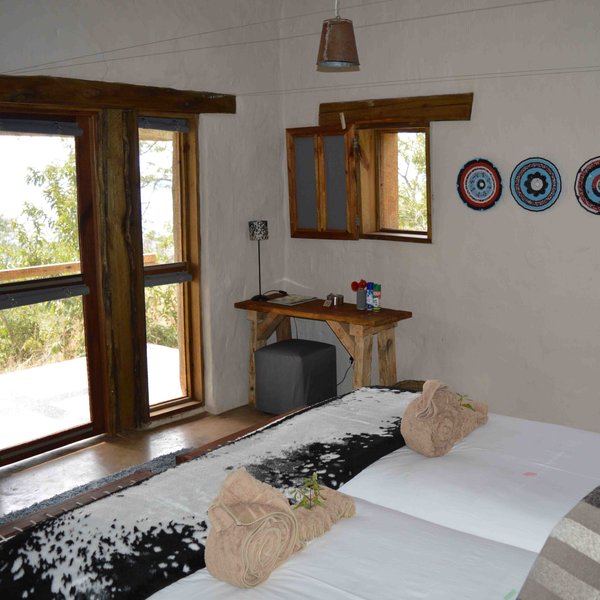
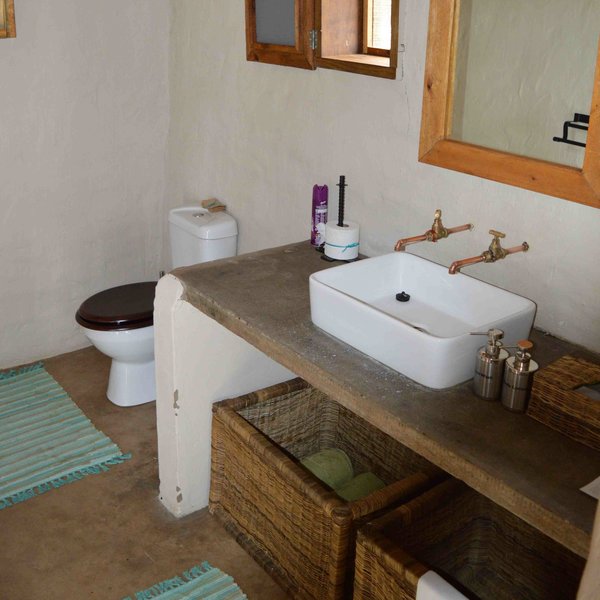
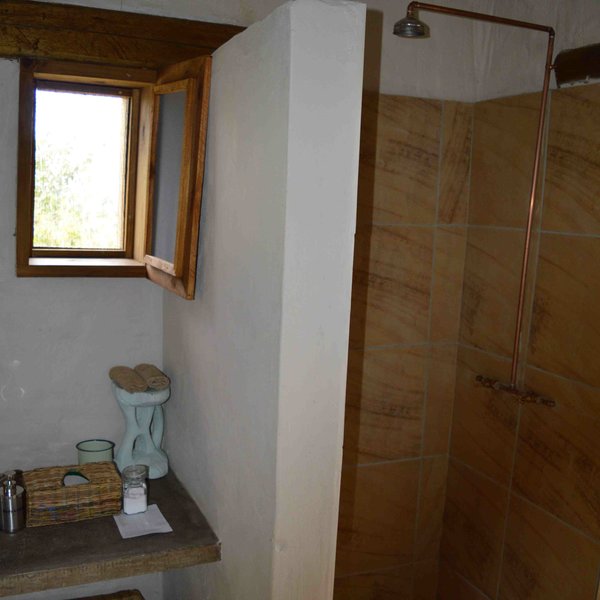
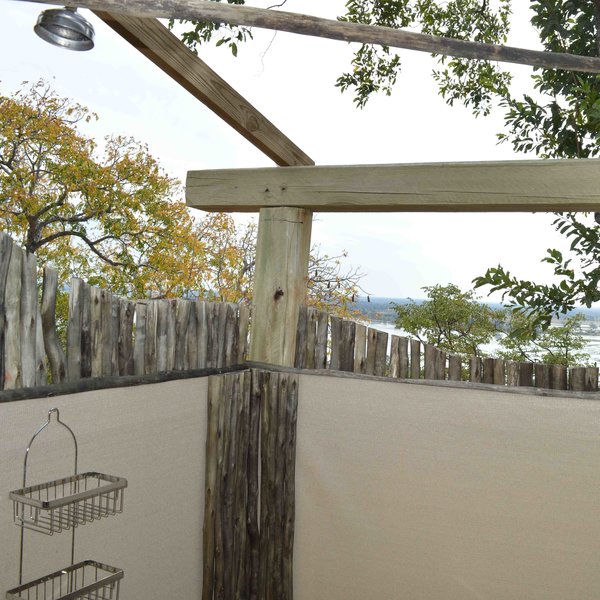
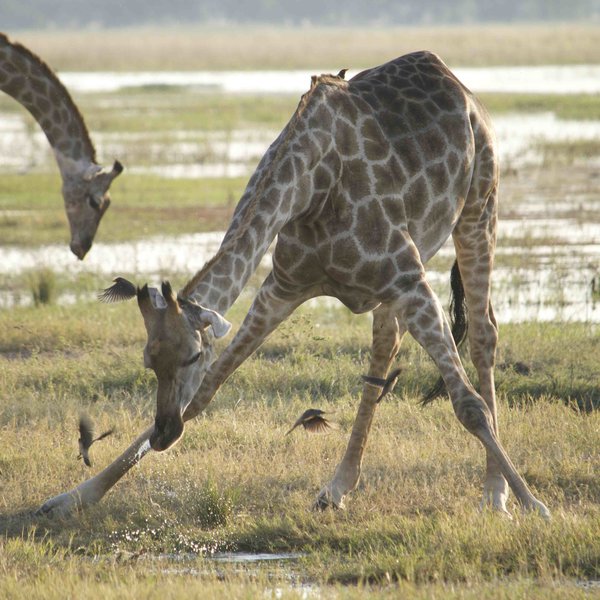
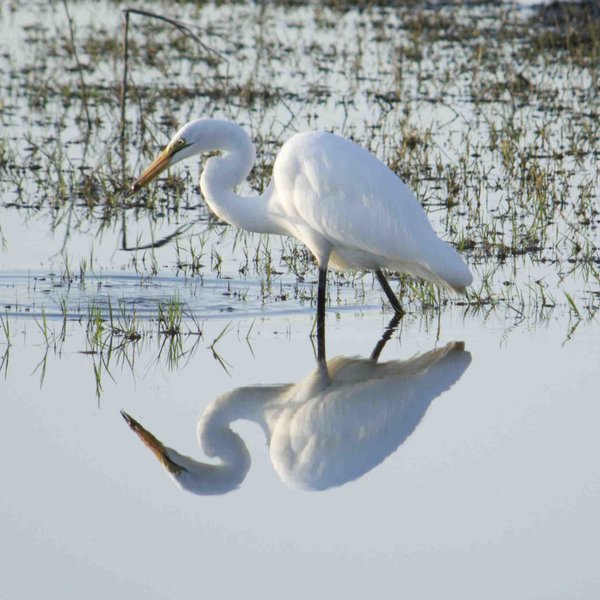
Expert Africa's gallery
When we travel we take lots of photos ourselves to give you a real and un-edited view of the safaris. See our 15 pictures of Chobe Elephant Camp to get the candid view.
View galleryChobe Elephant Camp: Our full report
Chobe Elephant Camp is situated in the Chobe Forest Reserve on the western perimeter of Chobe National Park.
The camp sits high on a rocky ridge, overlooking the mighty Chobe River and its surrounding floodplains, with views across to Namibia's Zambezi Region (formerly the Caprivi Strip). The camp is simple and fairly contemporary in design, and fits into the surrounding bush setting.
The main communal area at Chobe Elephant Camp is effectively a large corrugated-iron-roofed shed – albeit a very nice one! With large exposed wooden beams, polished concrete floors and rendered cream walls, the décor has a modern farmhouse feel. A big island bench separates a tiny bar and the humble sitting area, which is scattered with a few wooden chairs and tables, a wooden bench and a sofa, from the just as simple dining area, whose pine tables and chairs give a slight boarding school feel. Although the building is open to the front, it is set back on the ridge so the views take in only the immediate vicinity.
Steps lead down to a sandy boma area, where on a previous visit we enjoyed post-dinner drinks around the fire, which is lit most evenings. A gravel path takes you to a decent sized swimming pool situated on a deck and surrounded by sunloungers, where guests will find the best views across the river.
Chobe Elephant Camp now has 18 chalets (six new chalets opened up in June 23); two of these are two-bedroom family units, that wind around the escarpment from the main area along gravel pathways. The chalets, like all the camp buildings, are constructed from sandbags, which have then been rendered, creating an insulating barrier against the outside elements. Each chalet has a small veranda with a couple of canvas camping chairs, a quiet place to sit and watch for wildlife passing through below.
The chalets are similarly decorated to the main area, with cream rendered walls, polished concrete floors and wooden panelling – stylish, but with only the bare basics. The ceilings have been painted white to add a spacious and airy feel, and there is a ceiling fan and also an air conditioning unit above each bed for those scorching summer days. The twin beds, which can be made into a double on request, have white crisp linen, wooden headboards and brown scatter cushions. Along one wall, a wooden desk, resembling a small trestle table, has a plug point for charging camera batteries, a lamp and a can of insect repellent. A recess on the opposite wall houses a hanging rail, three small shelves and an electronic safe. A mosquito net suspended by a thin wire frame is folded behind the bed and can be pulled around when needed.
An open doorway, screened by a curtain on a steel curtain rod, leads to the en-suite bathroom, where the rustic theme continues. A rectangular ceramic sink with copper taps sits atop a polished concrete counter. Towels are provided in large wicker baskets beneath the sink, and washing powder and soap are supplied. The shower has its own cubicle, open to one side, and an external door leads outside to a larger, private shower.
The family chalet comprises two separate double/twin rooms, each en-suite, either side of a sitting room, with interleading doors leading from each bedroom. Thus it would work equally well for two couples travelling together.
Activities at Chobe Elephant Camp focus on 4WD game drives in the national park (with up to 9 people in a vehicle) and boat cruises on the Chobe River. It is also possible to do an escorted tour of a nearby village.
While Chobe National Park is without doubt one of the busiest safari areas within Botswana, particularly during the peak dry season from June to October, Chobe Elephant Camp's location on the less-frequented western side of the park means that you are unlikely to come across as many safari vehicles as near Kasane. Access is via the Ngoma Gate, just ten minutes' drive away, where there is no need to brave the sometimes very long queues at the eastern Sedudu Gate.
Often the best game viewing in Chobe is from the river. Boat cruises – which start close to Kasane, approximately 50 minute’s drive away, are taken as part of a full-day trip. Guests leave camp in the morning, taking a slow game drive through the park, usually along the riverfront, before boarding the boat in late morning or early afternoon, when the river is reasonably quiet. The return trip will include either a short afternoon game drive on the way back to camp, or a more speedy drive along the park’s tarred road; all depends on time, as park rules require everyone to be out of the park by sunset. If time is running out, and you’re on the tarred road, the drive could feel rushed, and windy in the back of the open game vehicle, but there is often game to see along the road. We have spotted small herds of sable antelope, lions, elephants and wild dogs here before!
The game densities in Chobe, especially in the dry season (June to October), can be phenomenal, but those who have stayed in the more exclusive private concessions in Botswana may be frustrated at having to share sightings with a fair number of vehicles and boats. Conversely, we have had some very enjoyable game drives in Chobe National Park. While the game densities on our last visit in May 2023, weren't as good as those later in the year, there was still plenty of wildlife to be seen (we saw lion, leopard, elephant, buffalo, hippo, giraffe, to name a few), and for Chobe, this time of year is relatively free of hoards of people.
Activities
4WD Safari
Birdwatching
Boat trip
Helicopter
Private activities
Families & children
- Attitude towards children
- Chobe Elephant Camp welcomes children aged 6 and above, though families with children under the age of 12 must book a private vehicle.
- Equipment
- Chobe Elephant Camp has two family chalets, each with two bedrooms.
- Generally recommended for children
- We would recommend Chobe Elephant for older children with a genuine interest in wildlife. The full-day trips including a boat cruise, especially, can make for a very long day for children.
- Notes
- Chobe Elephant Camp is unfenced with potentially dangerous wildlife in the area. The swimming pool is unfenced. Children must be under the supervision of a parent or guardian at all times.
Food & drink
- Usual board basis
- Full Board & Activities
- Food quality
- On our most recent visit in May 2024, the meals featured simple home cooking and were generally very good. Vegetarians and many other special requirements can be catered for with sufficient notice.
Breakfast of yoghurt, cereal, fruit, muffins, tea and coffee is served before the morning activity or full-day excursion.
Those taking just a morning game drive will be offered brunch. During our last stay we had very tasty dhal and vegetable curry (though a chicken pasta dish was also on offer), along with a mix of salads, fresh homemade bread and a cheese platter and fruit plate to finish.
If you take the full-day excursion then the guide takes a packed lunch, which includes a mix of picnic treats.
For afternoon tea there was a variety of sweet and savoury options on offer, we enjoyed some tasty crispy spring rolls and salad, though the cakes looked very appetising! Fruit juices, homemade lemonade and iced tea and coffee were on offer as well.
Dinner is a three-course meal served after everyone has returned from the afternoon activities. We enjoyed a tasty corn and ham chowder-style soup with homemade bread, followed by roast chicken with roast potatoes, baked squashes filled with cheese and corn, and mixed green vegetables. For pudding we had a refreshing fruit salad. - Dining style
- Group Meals
- Dining locations
- Indoor and Outdoor Dining
- Further dining info, including room service
- None
- Drinks included
- A wide selection of drinks is available from the bar cabinet and these are included in the price. Premium brands, such as malt whiskies or French champagne, can be requested for an additional charge.
Fresh bottled mineral water and glasses are kept on a stand by the bed.
Our travellers’ wildlife sightings from Chobe Elephant Camp
Since mid-2018, many of our travellers who stayed at Chobe Elephant Camp have kindly recorded their wildlife sightings and shared them with us. The results are below. Click an animal to see more, and here to see more on our methodology.

100% success

100% success

100% success

100% success

100% success

94% success

80% success

67% success

53% success

50% success

27% success

20% success

19% success

14% success

13% success

0% success

0% success

0% success
Getting there
- Location
- Chobe National Park, Botswana
- Ideal length of stay
- A stay of two to three nights would be ideal at Chobe Elephant Camp.
- Directions
- It's roughly a 50-minute drive from Kasane Airport to Chobe Elephant Camp, largely along a tar road; transfers are made in an air-conditioned minibus.
- Accessible by
- Fly-and-Transfer
Communications
- Power supply notes
- Chobe Elephant Camp uses solar power as their main source of power but has a back-up generator. Guests can charge camera batteries and other electrical equipment in their rooms.
- Communications
- Cellphone coverage can usually be found at Chobe Elephant Camp. Limited Wifi is available in the main area.
- TV & radio
- None
- Water supply
- Mains
- Water supply notes
- The chalets at Chobe Elephant Camp have fully plumbed showers. Toilets are flushing and there is running cold water in the en-suite bathrooms.
Health & safety
- Malarial protection recommended
- Yes
- Medical care
- The managers are first-aid trained. The nearest doctor is in Kasane, which is approximately 50 minutes' drive from the camp.
- Dangerous animals
- High Risk
- Security measures
- Guests are escorted to and from their rooms in the evening. There are locks on the chalet doors. 'Fog horns' are provided in the chalets to summon help in case of emergency.
- Fire safety
- Fire extinguishers are situated around the lodge.
Useful info
- Disabled access
- Not Possible
- Laundry facilities
- A laundry service is included, although this does not include underwear. Washing powder is provided in the rooms for this purpose.
- Money
- There are safes in all the rooms.
- Accepted payment on location
- MasterCard and Visa credit cards are accepted; Diners and Amex are not. Cash payments may be made in South African rand, GB sterling, US dollars, euros and Botswana pula.
Plan and book your trip with Expert Africa
All of our trips are tailor-made, so we'll always adapt them to suit you. Talk to an Expert and let us plan and arrange your perfect trip.

Talk to an Expert
Call or email us now! We’ll match you with the Specialist in our team who is best suited to help you. Then together we can start planning your trip.

Set up your itinerary
Based on our experience and your ideas, your specialist will create a detailed, costed itinerary. We’ll refine it together, until we have a trip that you’re perfectly happy with.

Prepare for your trip
The same Specialist will make the seamless arrangements for your trip, send you detailed travel documents, and be available to answer any questions before you depart.

Travel with peace of mind
After you set off, you’ll be cared for by our partners in Africa, most of whom have worked with Expert Africa for decades. And if you ever need us urgently, we’re available 24/7.

When you return
We love to learn about your trip, and so will always be grateful if you’ve the time to give feedback to your Specialist when you return.
Chobe Elephant Camp's location
Look closer at the environment and surroundings of Chobe Elephant Camp.
Excursions from Chobe Elephant Camp
Optional extra day-trips and excursions possible whilst you're staying at Chobe Elephant Camp. Talk to us: these are usually best arranged before you go.
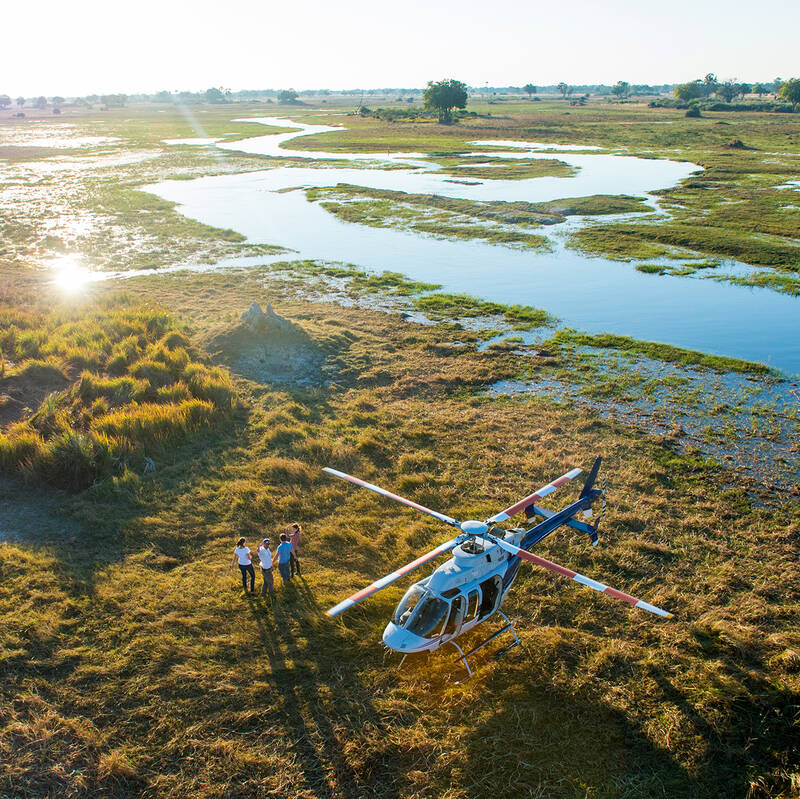
Helicopter Flight - Botswana
Various: from 30 minutes to half a day.
Low-flying, agile and offering superb views, helicopters are an ideal way to move around the Okavango Delta.You can use them instead of fixed-wing inter-lodge transfers or as an addition to other wildlife watching activities, and of course, helicopters can hover to allow that perfect pic, whereas fixed-wings can’t.
More about Helicopter FlightOther lodges in Chobe National Park
Alternative places to stay in this same area.
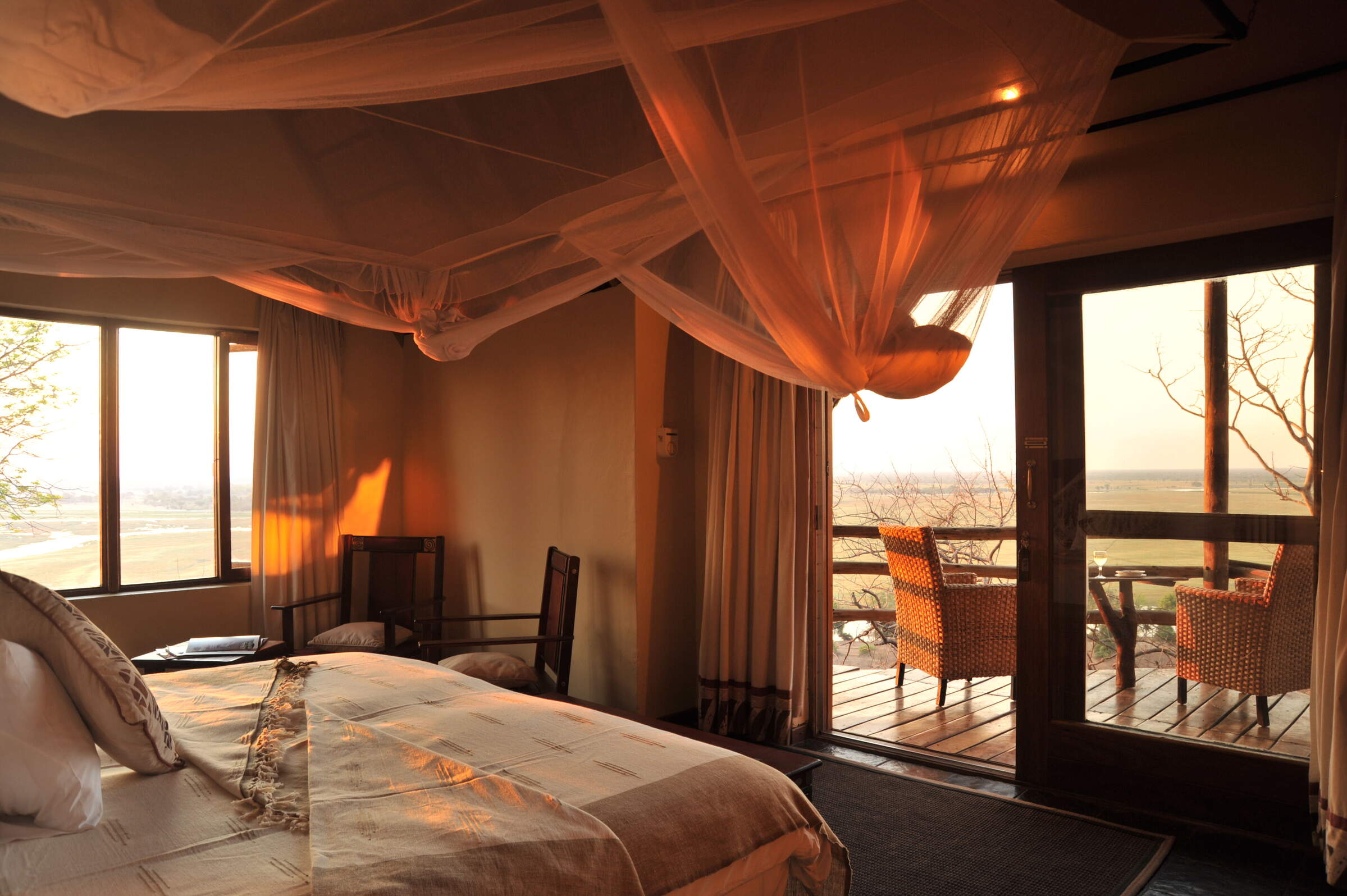
Muchenje Safari Lodge
One of our favourites in the area, Muchenje is a small, welcoming lodge at the quieter, western end of the Chobe Riverfront.
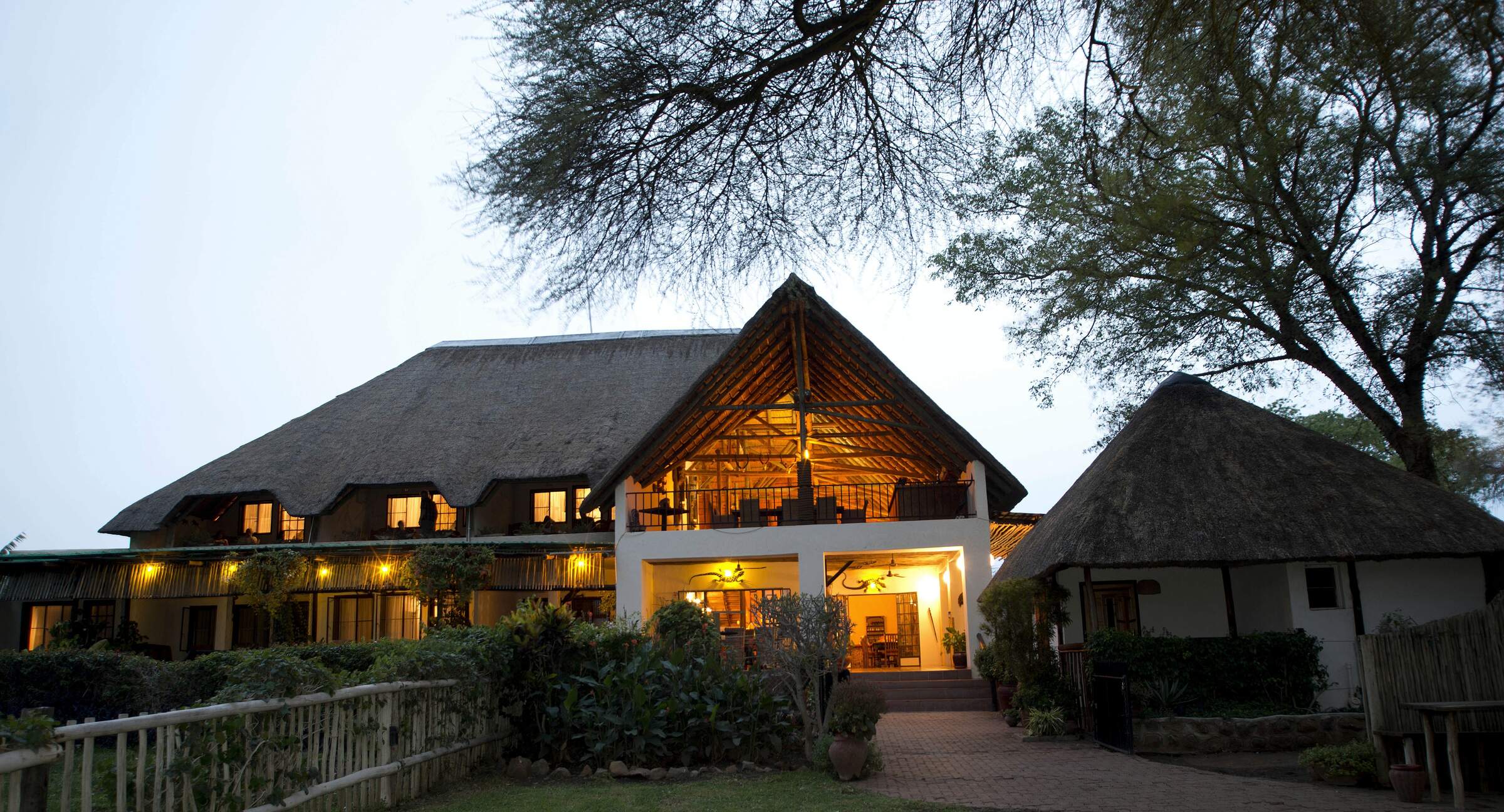
Chobe River Lodge
Overlooking the Chobe River, the intimate Chobe River Lodge is a haven of tranquillity away from the bustle of Kasane.
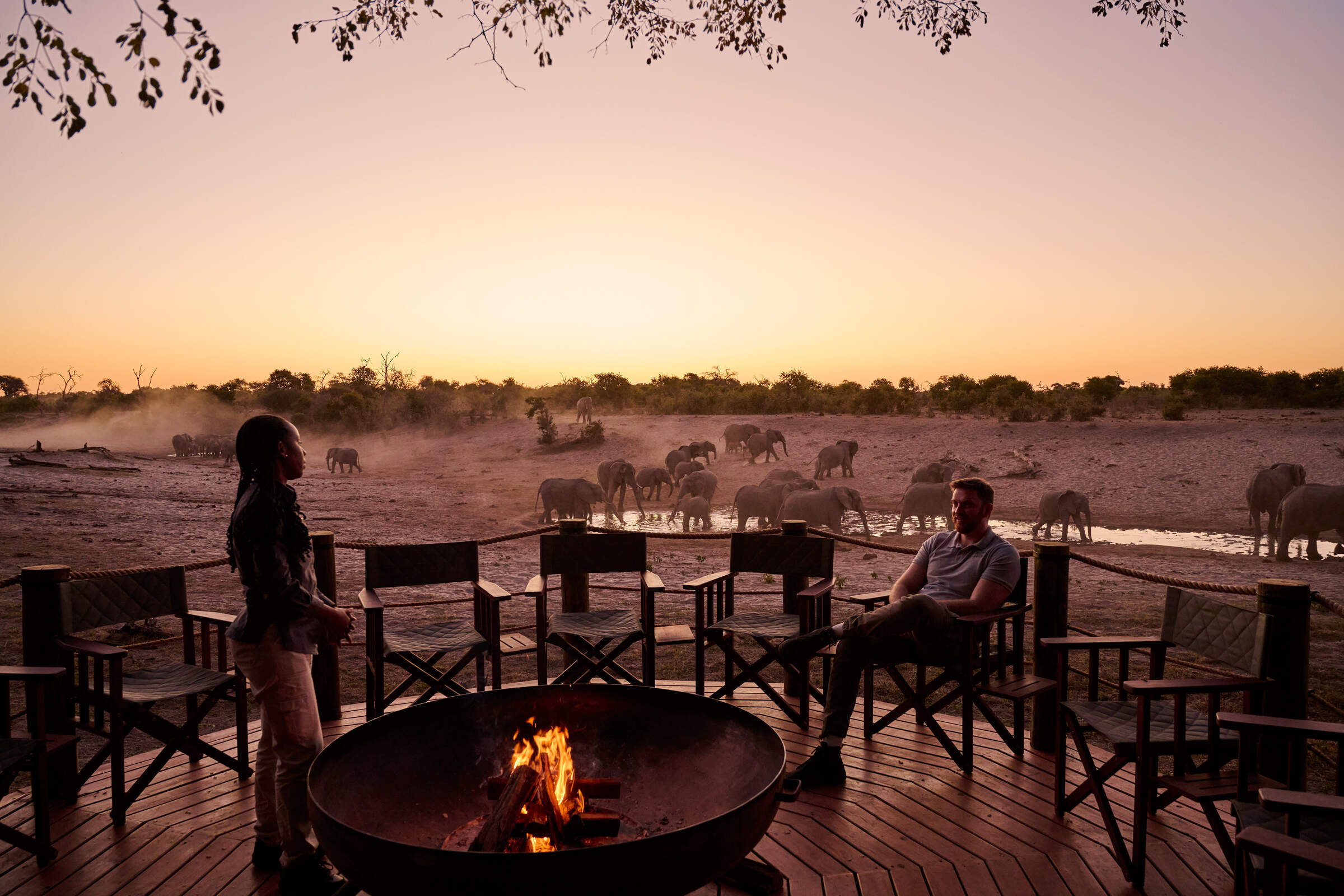
Savute Safari Lodge
Savute Safari Lodge sits on the banks of the Savuti Channel within Chobe National Park, and offers access to excellent game viewing, especially during the dry season.
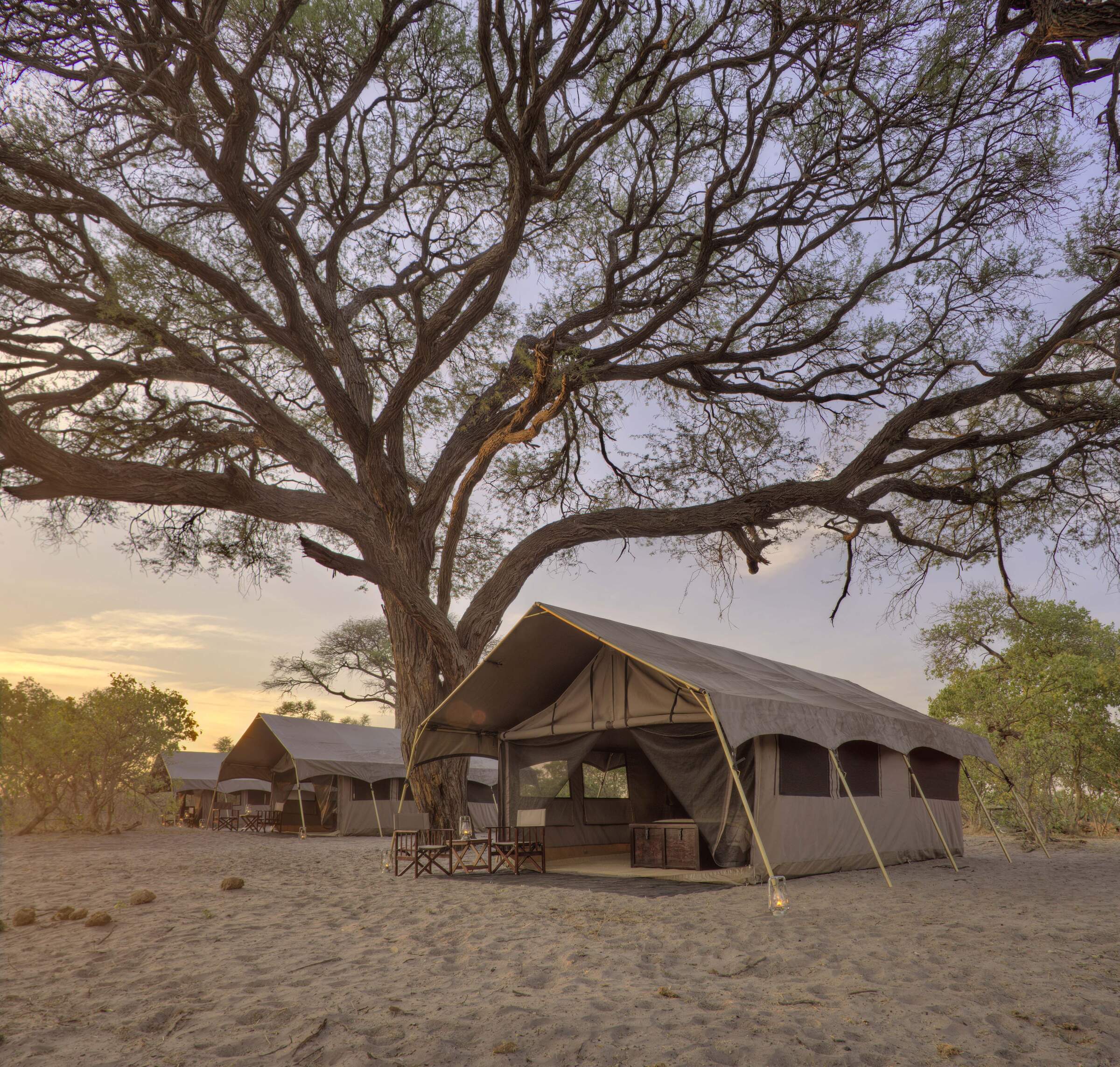
Savute Under Canvas
A mobile camp with the comforts of a semi-permanent tented camp, Savute Under Canvas offers guided game drives within the Savuti region of Chobe National Park.
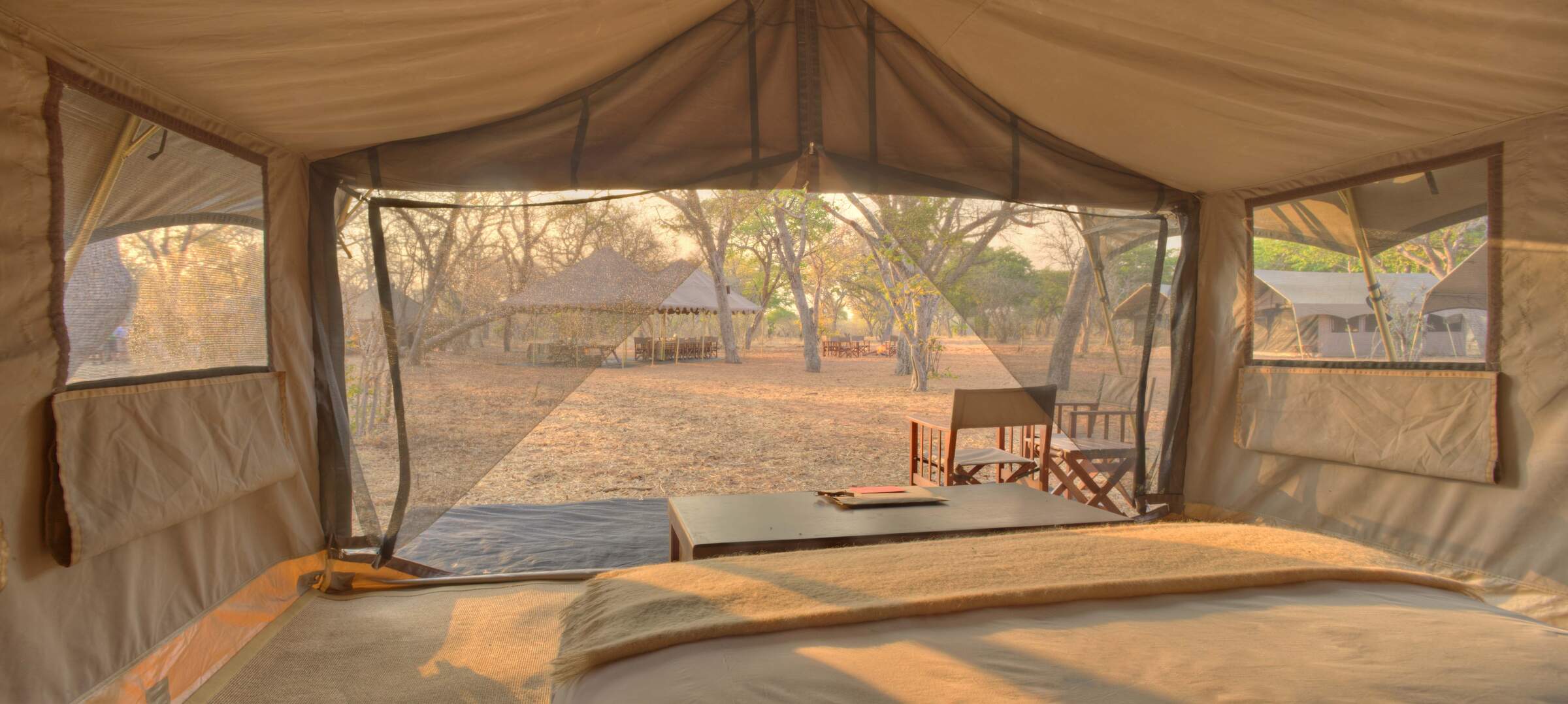
Chobe Under Canvas
This is a typical location for Chobe under Canvas, a small, semi-permanent camp in the Chobe Riverfront area that offers good value for money and high standards of care.
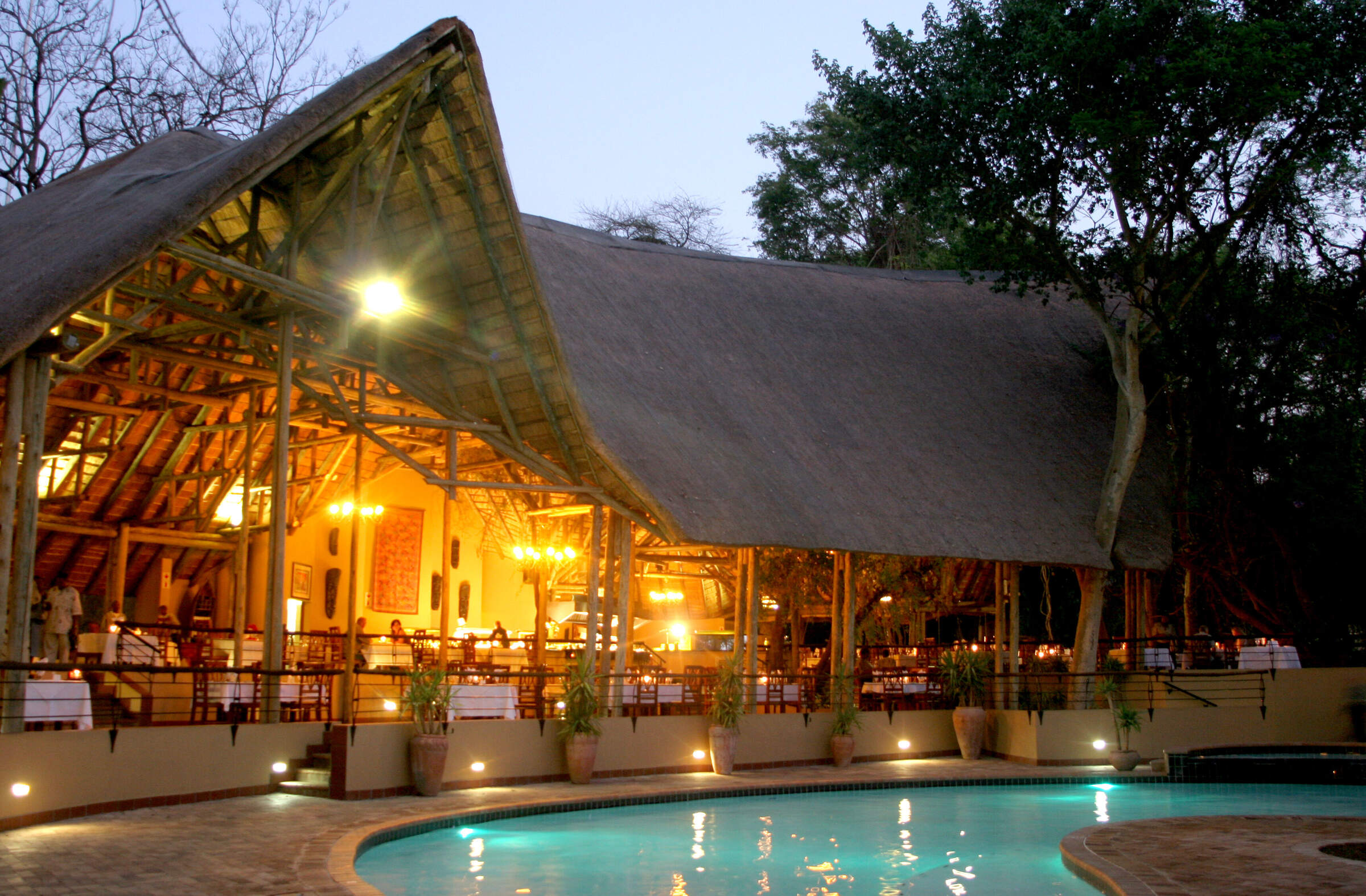
Chobe Safari Lodge
Chobe Safari Lodge is a good value, hotel-style lodge in the heart of Kasane offering game drives, boat cruises and fishing trips.
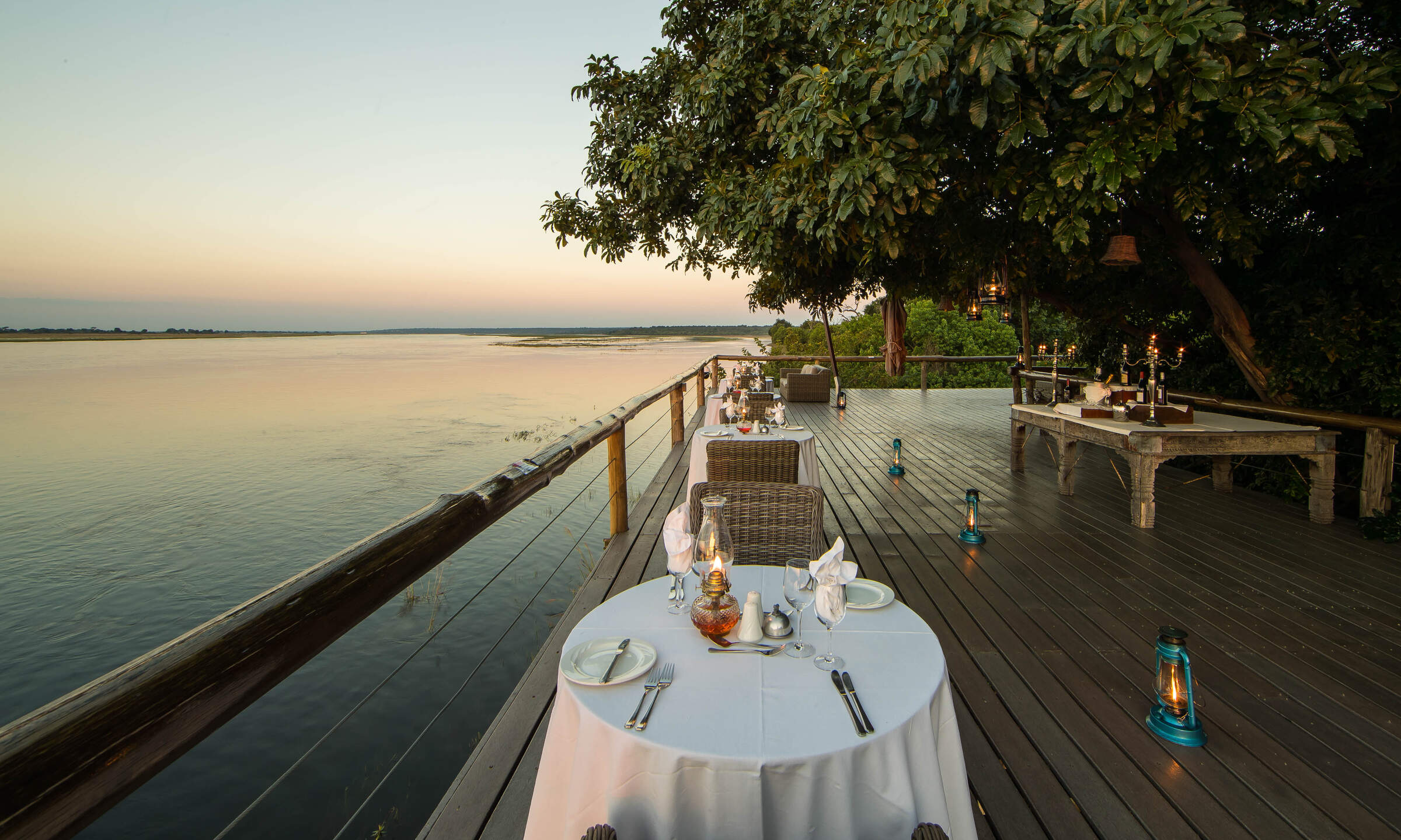
Chobe Game Lodge
Chobe Game Lodge occupies an enviable riverfront location within Chobe National Park and boasts well-earned 'eco' credentials, as well as an excellent all-female guiding team.
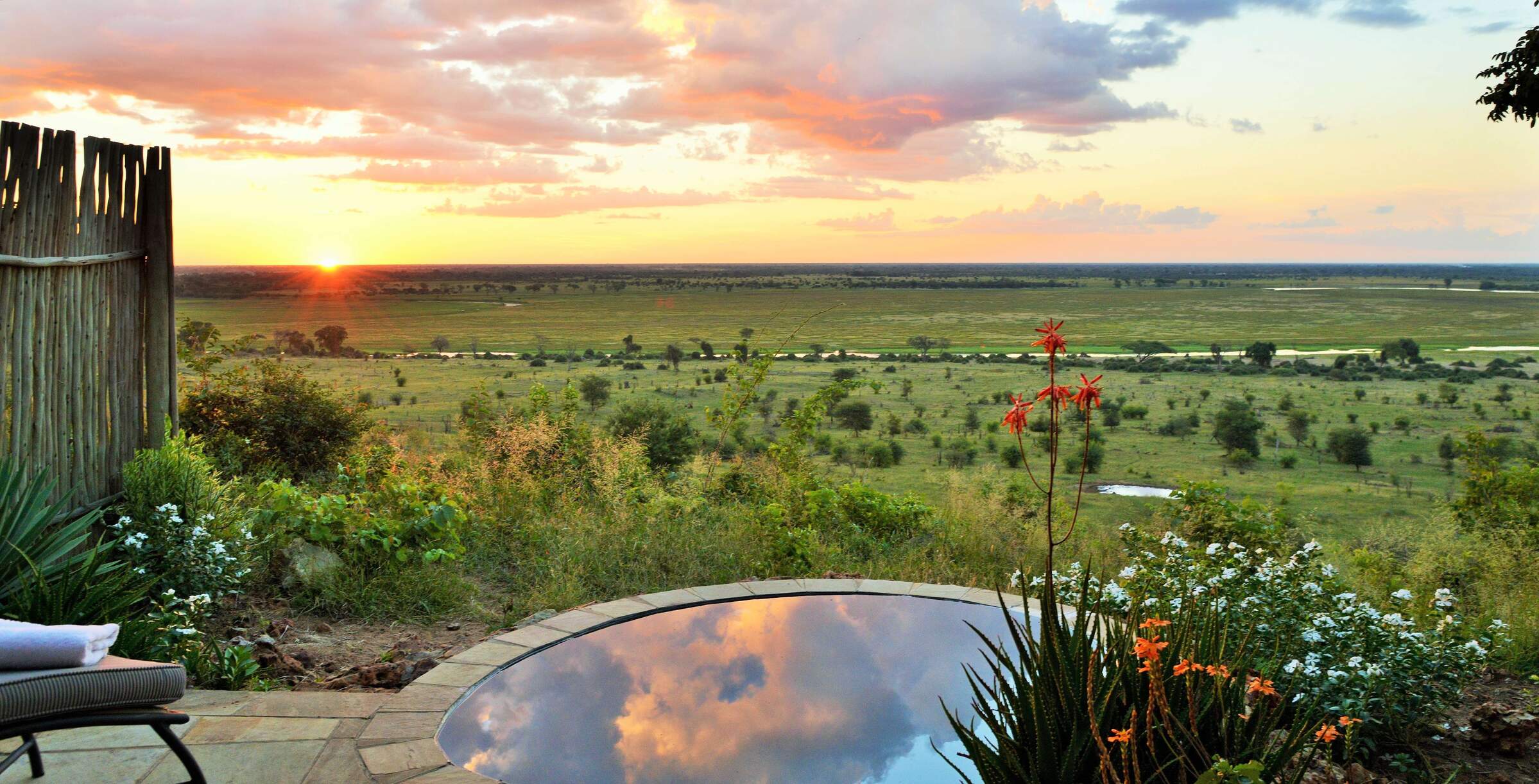
Ngoma Safari Lodge
With sweeping views across the floodplains of the Chobe River, Ngoma offers superb food and flexible safari activities.
Closed for refurbishment 5 Jan - 28 March 2026
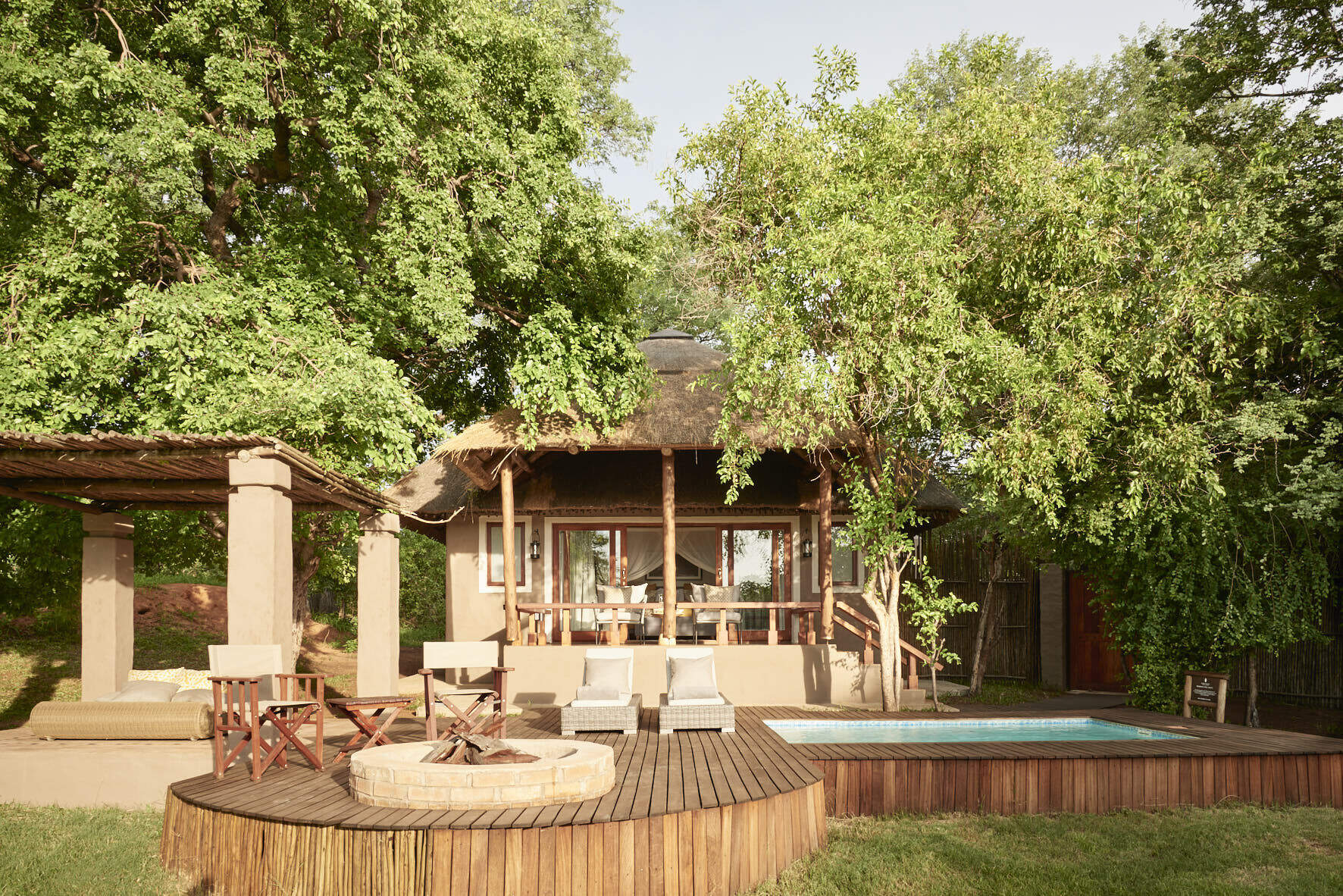
Chobe Chilwero
On the periphery of Chobe National Park, Chobe Chilwero offers luxurious surroundings and excellent food, which complement superb game viewing on game drives and boat trips.
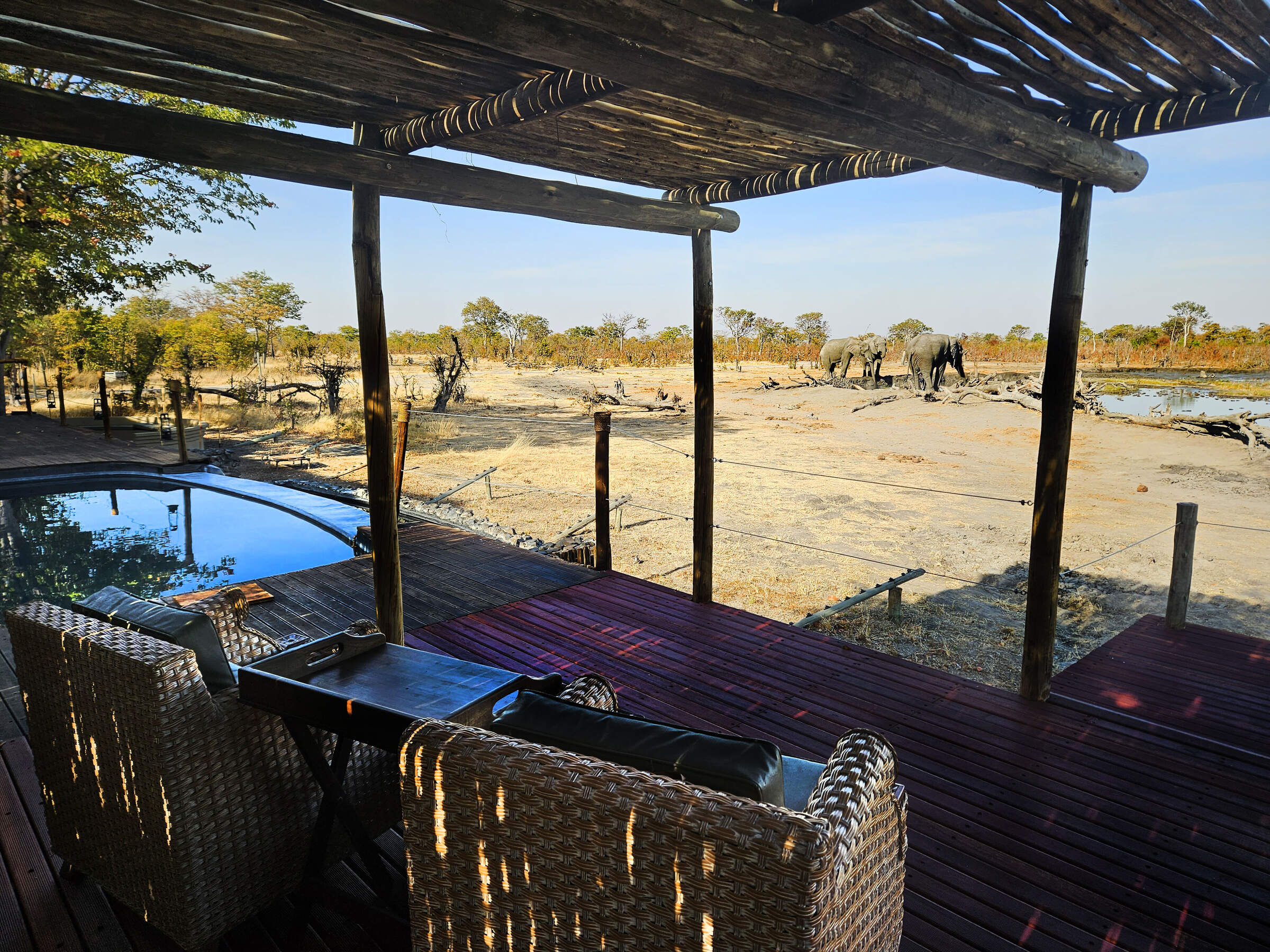
Camp Kuzuma
Camp Kuzuma sits in the Kazuma Forest Reserve and is an excellent place to see elephant in particular. Away from the busier riverfront area of Chobe National Park this camp offers a luxurious base form which to explore this less visited region of northern Botswana.
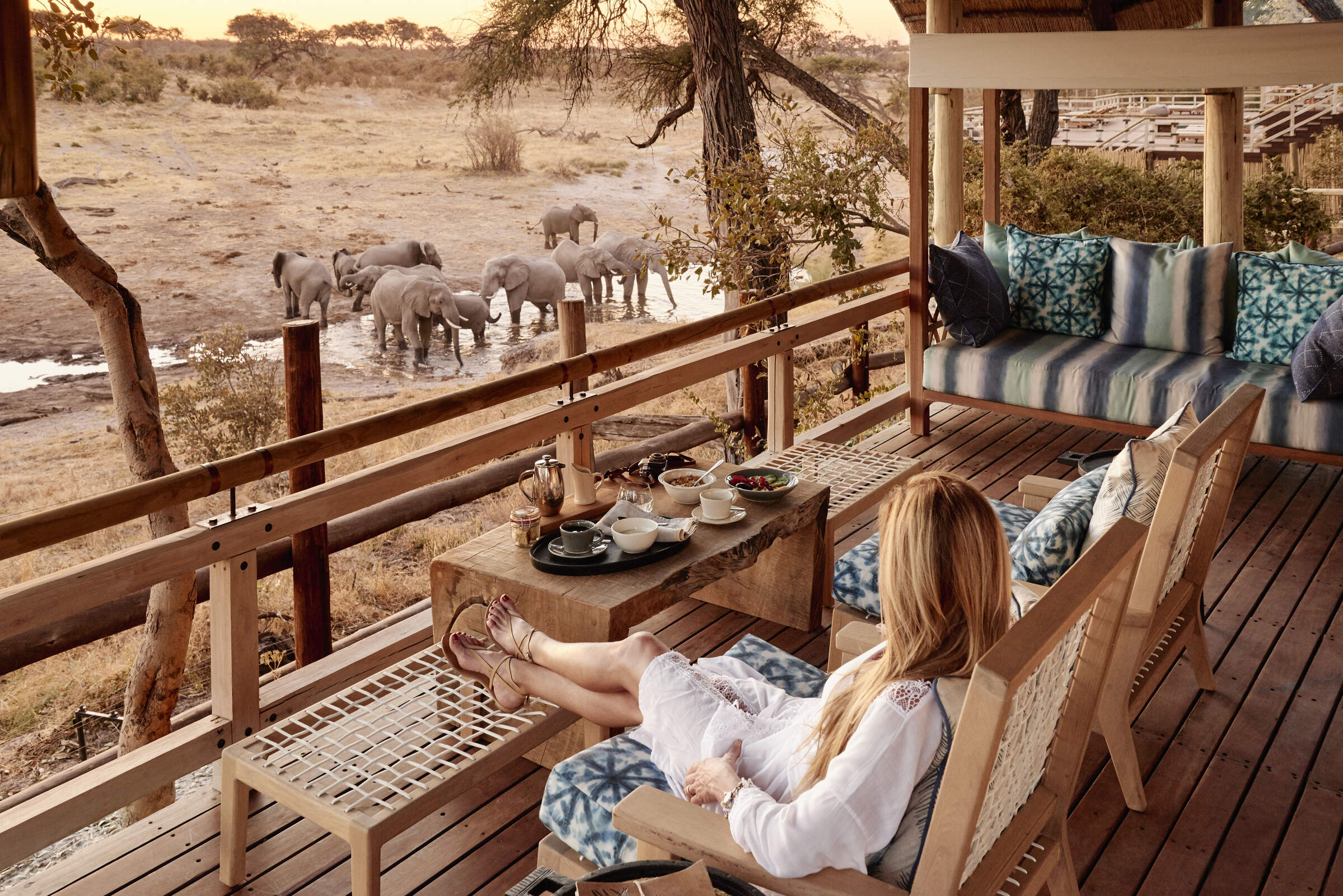
Savute Elephant Lodge
Savute Elephant Lodge is a luxurious camp on the banks of the now flowing Savuti Channel. This is a classic big-game area, although its location within Chobe National Park does limit the activities which are possible here.
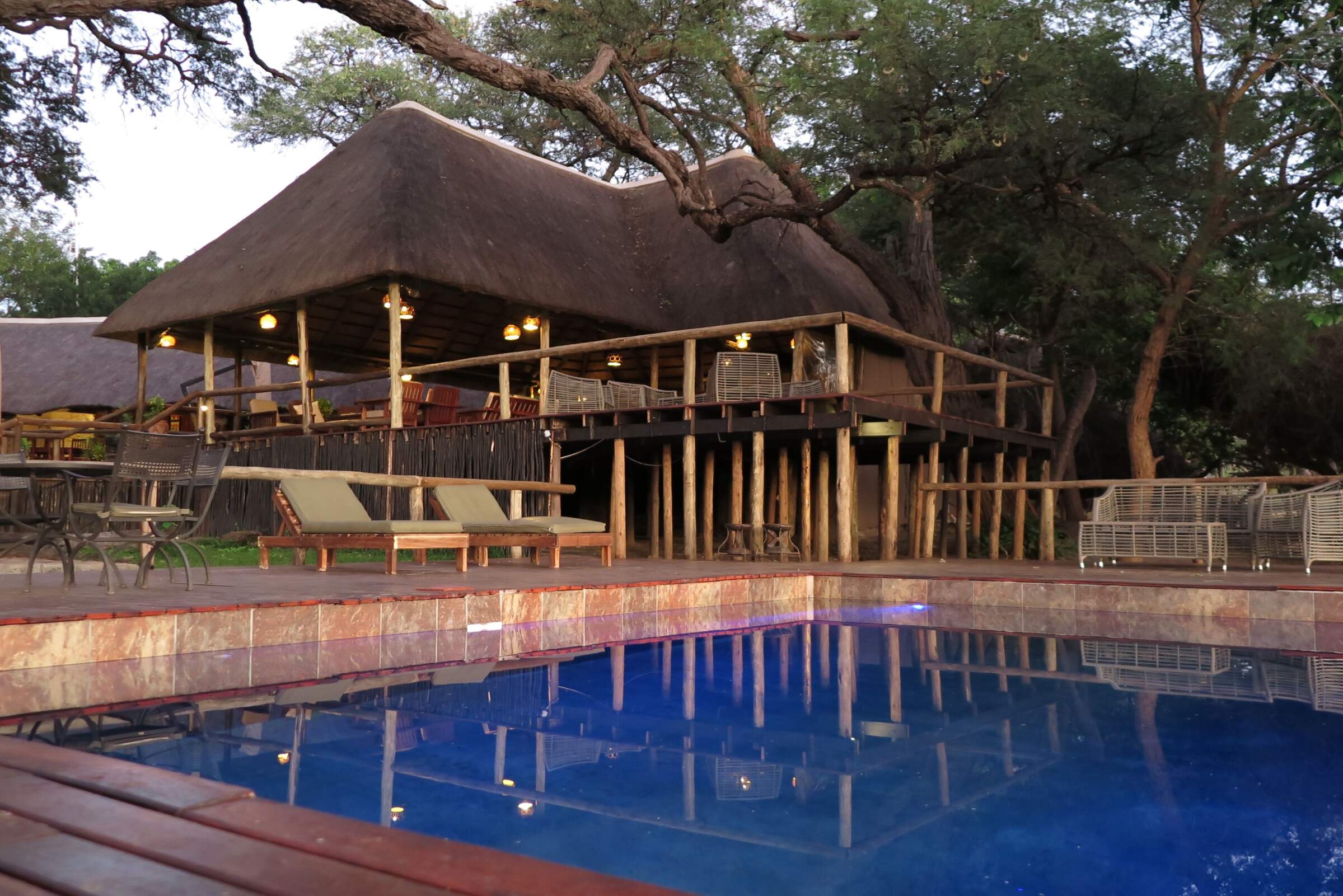
Elephant Valley Lodge
Elephant Valley Lodge is a lovely camp in a beautiful setting – sit in its hide and watch the wildlife come to drink at the waterhole. Activities focus on boating and drives in Chobe which - although very busy, and a long drive from the lodge – is very rich in wildlife.
When to go to Chobe National Park
Our month by month guide: What it's like to visit Chobe Elephant Camp in Chobe National Park
Jan
Feb
Mar
Apr
May
Jun
Jul
Aug
Sep
Oct
Nov
Dec
Chobe National Park in January
January marks the peak of the rainy season in Chobe National Park. Evening rains are typically brief but heavy, often accompanied by thunderstorms. While temperatures remain high, they are slightly cooler compared to earlier months. Wildlife tends to be more dispersed, making it harder to spot animals. Big game densities near the Chobe Riverfront are relatively low, but some resident species, like giraffes, are accustomed to vehicles and can appear so relaxed that they seem almost tame.
The Savuti Marsh becomes lush and green, attracting herbivores. Migratory birds abound throughout the park, with the Linyanti Marsh being particularly rich in birdlife during this period. January is an excellent time for visitors interested in lush landscapes and diverse birdlife. Lower rates at many lodges make this a good time to visit on a more moderate budget.
- Warm temperatures with occasional thunderstorms
- Birdlife at its most spectacular in Chobe
- Big game dispersed across the park
- Seek most wildlife away from the river
- Good availability and rates in Chobe’s lodges and camps
Our view
A good time to visit, with pros & cons
Weather in January
Chobe National Park in February
February in Chobe National Park is similar to January, with heavy rains most days, often towards evening. The landscape is green and alive, with insects and smaller animals more easily seen. Many birds and animals are raising their young, especially in the Linyanti and Savuti areas, making for lovely family group sightings. The Chobe River swells, creating a spectacular landscape and attracting diverse wildlife. However, the rains create pools and waterholes in the bush, which combined with thicker vegetation makes it harder to spot larger animals.
The Chobe Riverfront area still offers a good wildlife experience as although much big game has moved away, the animals that remain are often more relaxed. Boat cruises on the Chobe River provide excellent opportunities to observe wildlife from a different perspective. Visitor numbers remain low, with good rates and more availability in camps and lodges.
- Warm with occasional thunderstorms in Chobe
- Vegetation running riot; smaller wildlife thriving
- Many animals with young in the park
- Big game dispersed throughout Chobe
- Low visitor numbers, good camp availability
Our view
This is not a great time to visit
Weather in February
Chobe National Park in March
March typically marks the end of the main rainy season in Chobe National Park, with showers gradually tapering off. Many days are characterised by clear skies, intense sunshine, and rising temperatures. Short afternoon thunderstorms may still occur, while the park's landscape remains lush and vibrant. During this time, many birds and animals complete the process of raising their young. The Savuti Marsh area becomes particularly fascinating as predators exploit the vulnerability of the young and weaker prey.
The Chobe River levels start to stabilise, offering excellent boat safari opportunities. March can also be a good time to explore the Linyanti area, where many animals congregate as other water sources begin to dry up. With fewer visitors in most areas, rates are still be relatively low at lodges and safari camps.
- Variable weather, rains tailing off in Chobe
- Occasional small thunderstorms in the park
- Many animals finish raising young in Chobe
- Birdlife still spectacular along Chobe River
- Few tourists, often lower rates in lodges
Our view
A good time to visit, with pros & cons
Weather in March
Chobe National Park in April
During April, rains in Chobe National Park have usually stopped, though there may still be the odd afternoon downpour. This results in clear skies and a lovely green, lush landscape. Night-time temperatures start to drop, and are especially noticeable in the Savuti area. The Chobe Riverfront begins to flourish at this time, with the numbers of elephants and other wildlife gradually increasing along the river.
The Savuti region is a particular favourite during this time, with good predator-prey interactions on display. April marks the beginning of the shoulder season for many camps, so rates are on the rise but still relatively moderate. This is an excellent time for photographic safaris, as the air is clear and the landscape still green.
- Cooler evenings, occasional showers in Chobe
- Northern Chobe lush and green
- Good predator-prey interaction observable
- Savuti area best for wildlife viewing
- Popular shoulder season, relatively low rates
Our view
A good time to visit, with pros & cons
Weather in April
Chobe National Park in May
May is a very popular month to visit Chobe National Park, often the last month of the shoulder season before camp rates hit their peak. While there is very little chance of rain, the annual floods from Angola start to make their way through the northern part of the park. With cooler temperatures in the morning and evening, predator activity tends to be higher, especially in the Savuti and Linyanti areas.
The Chobe Riverfront becomes busier with wildlife as water dries up elsewhere, making it an excellent time for boat cruises on the Chobe River, where close encounters with elephants and other wildlife are a real treat. Away from the water, game drives in the park's interior become more rewarding as vegetation thins out and sightings improve. May is a favourite time for many visitors, and camp bookings throughout Chobe are start to be snapped up quickly.
- Cool mornings and evenings, little rain in Chobe
- Game viewing beginning to improve
- Predator activity increasing in Savuti
- Last month of shoulder season for most camps
- Availability decreases throughout Chobe
Our view
A very good time to visit
Weather in May
Chobe National Park in June
June marks the real start of the dry season in Chobe National Park. Temperatures are cool in the mornings and evenings, occasionally reaching freezing at night, and rising to 25-30°C/77-86°F during the day. This brings a certain clarity to the air and clear blue skies, making it a favourite month for serious photographers. Surface water and smaller natural waterholes are now drying up, leading wildlife to congregate around the remaining large water sources, including the Chobe River.
Visibility improves as the grass dies back, making game viewing very good throughout the park. The Savuti Channel and Linyanti areas see increased predator activity. June is an excellent time for both land and water-based safaris in Chobe, so not surprisingly, camp availability becomes scarce and rates climb.
- Warm days, cold nights in Chobe National Park
- Excellent conditions for wildlife photography
- Animals congregating at Chobe River
- Grasses dying back, improving visibility
- Peak season begins, rates increase
Our view
Fantastic: the very best time to visit
Weather in June
Chobe National Park in July
July in Chobe National Park offers cold evenings and mornings, combined with great daytime game viewing; this makes it one of the most popular times to visit. Vegetation is really thinning out, making game ever-easier to spot, with the few remaining waterholes attracting large congregations of wildlife species. The Chobe Riverfront is increasingly rewarding, with large herds of elephants and buffalo congregating along the river.
However, this area is now becoming busy with visitors. Game viewing is good in the Savuti area too, with frequent predator sightings. The Linyanti Marsh attracts diverse wildlife, including rare species like wild dogs. Camps are now very much into the peak season and tend to be full. Advance booking is essential for popular lodges and camps.
- Comfortable days, cold nights in Chobe
- Excellent game viewing as vegetation dies back
- Chobe Riverfront becomes busy with wildlife
- Private concessions offer exclusive experiences
- Peak season, higher rates in lodges
Our view
Fantastic: the very best time to visit
Weather in July
Chobe National Park in August
August is a favourite time for visiting Chobe National Park, as it aligns with the European and North American summer holidays. Camps tend to fill up quickly, so booking well in advance is essential. Daytime temperatures are pleasantly warm, perfect for outdoor activities; nights can be chilly, but the clear, cloudless skies also provide stunning opportunities for stargazing.
Wildlife is now congregating around the remaining water sources, especially along the Chobe River, making it a fantastic time for game viewing. If the Savuti Channel is flowing, it becomes a magnet for a variety of wildlife. This is one of the prime months to witness the park’s iconic large elephant herds. A boat cruise on the Chobe River offers up-close views of wildlife, including hippos and crocodiles.
With crystal-clear skies and animals congregating near water, August is an excellent time for photography safaris.
- Dry, warm days and cool nights in Chobe
- Spectacular stargazing opportunities
- Fantastic wildlife watching along Chobe River
- Large elephant herds visible at waterholes
- Peak season, high rates and limited availability
Our view
Fantastic: the very best time to visit
Weather in August
Chobe National Park in September
September is another very popular month to visit Chobe National Park. Days are warming up, while nights remain refreshingly cool. With drier conditions, most of the greenery has faded from the landscape, and photographers may find the haze from dust or smoke challenging, but it sets the stage for breathtaking sunsets.
Game viewing in September is exceptional, with large herds of elephants and buffalo gathering in the Chobe region. The Savuti and Linyanti areas also offer excellent predator sightings, and migratory birds begin to return, adding vibrant flashes of colour and adding to the park’s biodiversity.
Water-based activities on the Chobe River, such as boat cruises, are particularly rewarding, offering close-up views of animals coming to drink. Accommodation in camps and lodges is in high demand, with rates remaining at a premium, so early bookings are essential.
- Warmer days, cool nights in Chobe National Park
- One of the best months for wildlife viewing
- Large elephant and buffalo herds by Chobe River
- Hazy conditions create brilliant sunsets
- High season rates, many lodges and camps fully booked
Our view
Fantastic: the very best time to visit
Weather in September
Chobe National Park in October
October is typically the hottest and driest month in Chobe National Park. Towards the end of the month, the likelihood of rain increases, bringing a rise in humidity. The air is often dry and hazy, which can make photography more challenging, but the scarcity of water and vegetation leads to excellent opportunities for spotting big game. The Chobe Riverfront becomes a prime gathering spot for wildlife, particularly impressive herds of elephants.
In the Savuti area, predator-prey interactions are frequently observed around the remaining waterholes. Water levels are significantly lower by this time, meaning water-based activities like boating and fishing are limited to major tributaries. October is an ideal month for walking safaris, especially during the cooler morning hours. Despite the intense heat, it remains a prime time for wildlife enthusiasts eager to witness concentrated animal activity.
- Hot temperatures in Chobe, chance of late rain
- Excellent big game viewing opportunities
- Water activities limited as levels can be low
- Hazy conditions less ideal for photographers
- Final month of peak season in Chobe camps
Our view
Fantastic: the very best time to visit
Weather in October
Chobe National Park in November
November typically signals the end of the dry season in Chobe National Park. Rising temperatures bring increased humidity, leading to the arrival of the first rains. These showers are often brief but heavy, occurring in the late afternoon or at night, and can be quite dramatic. The rains provide a welcome relief, slightly cooling the temperatures and transforming the parched landscapes into vibrant shades of green.
As waterholes begin to replenish, wildlife starts to disperse across the park. Birdwatching is particularly rewarding this month, with the arrival of many migratory species, especially in the Linyanti Marsh area. The first half of November is a favourite among travellers, offering exceptional game viewing at more reasonable rates as Chobe enters its shoulder season.
- Hot days, increasing humidity in Chobe
- Heavy showers more likely as month progresses
- Wildlife watching good but less predictable
- Migrant birds arrive in Chobe National Park
- Shoulder season brings mid-range lodge rates
Our view
A good time to visit, with pros & cons
Weather in November
Chobe National Park in December
By December, the rains in Chobe National Park are underway, providing relief from the intense heat. While game viewing becomes more challenging as animals spread out, excellent sightings can still be enjoyed along the Chobe Riverfront and in the Savuti Marsh. The rains bring a vibrant transformation to the landscape, with fresh greenery creating beautiful scenery. This is also a fantastic time for bird enthusiasts, as numerous migratory species make their presence known.
The Linyanti area becomes especially lush, drawing a variety of wildlife. December is ideal for those eager to see newborn animals, as many species give birth during this time. Boat cruises on the Chobe River offer a refreshing way to observe wildlife and enjoy the scenery. With low-season rates at many camps, December is an appealing option for budget-conscious travellers looking to experience the park’s beauty.
- Temperatures falling from October-November highs
- High chance of rain in Chobe National Park
- Wildlife more dispersed across the park
- Game viewing more challenging but rewarding
- Typically low-season rates in Chobe camps
Our view
A good time to visit, with pros & cons
Weather in December

Looking for inspiration on where to travel next?
Visit our trip chooser to explore your options and find inspiration for your perfect African adventure
Inspire me